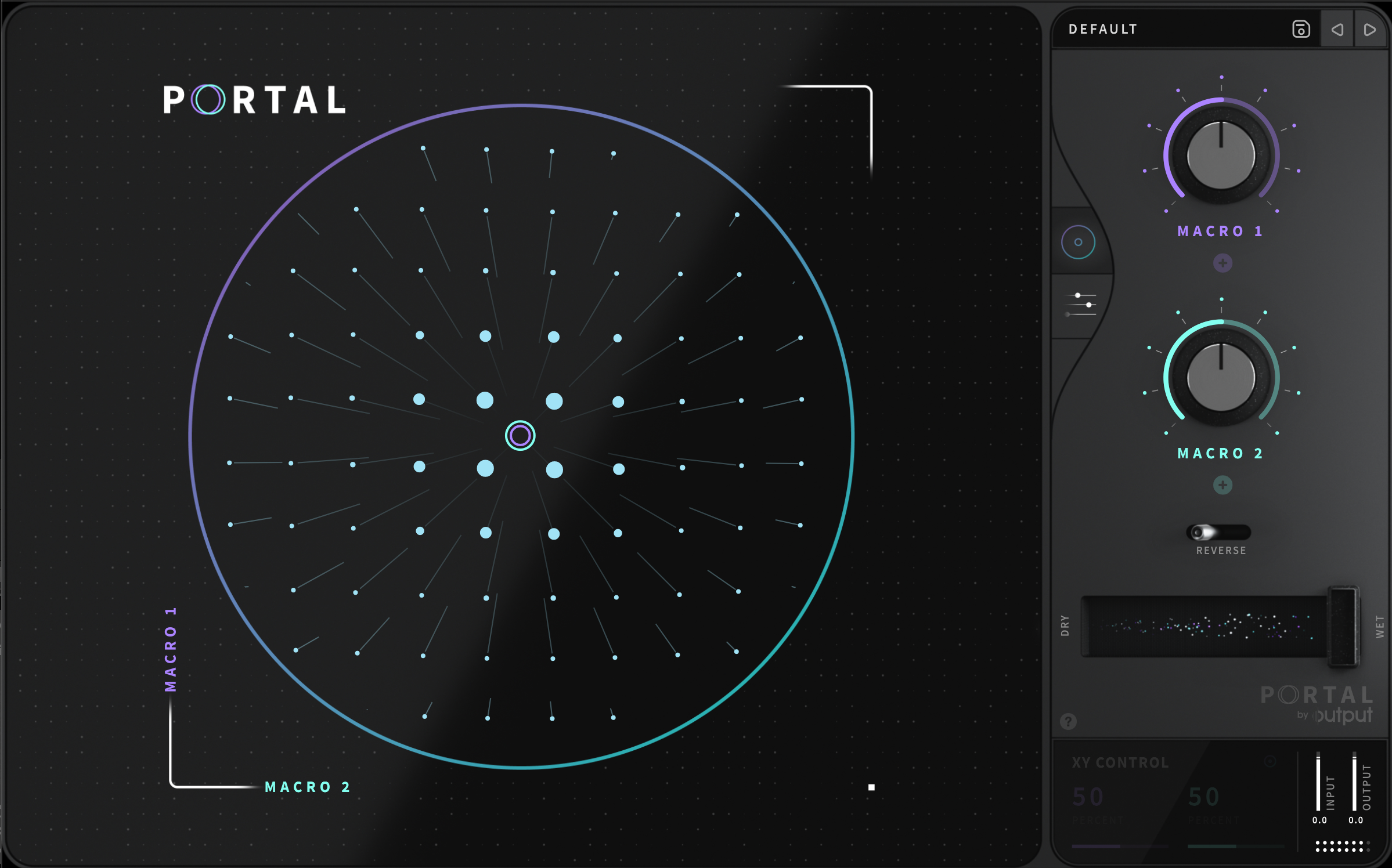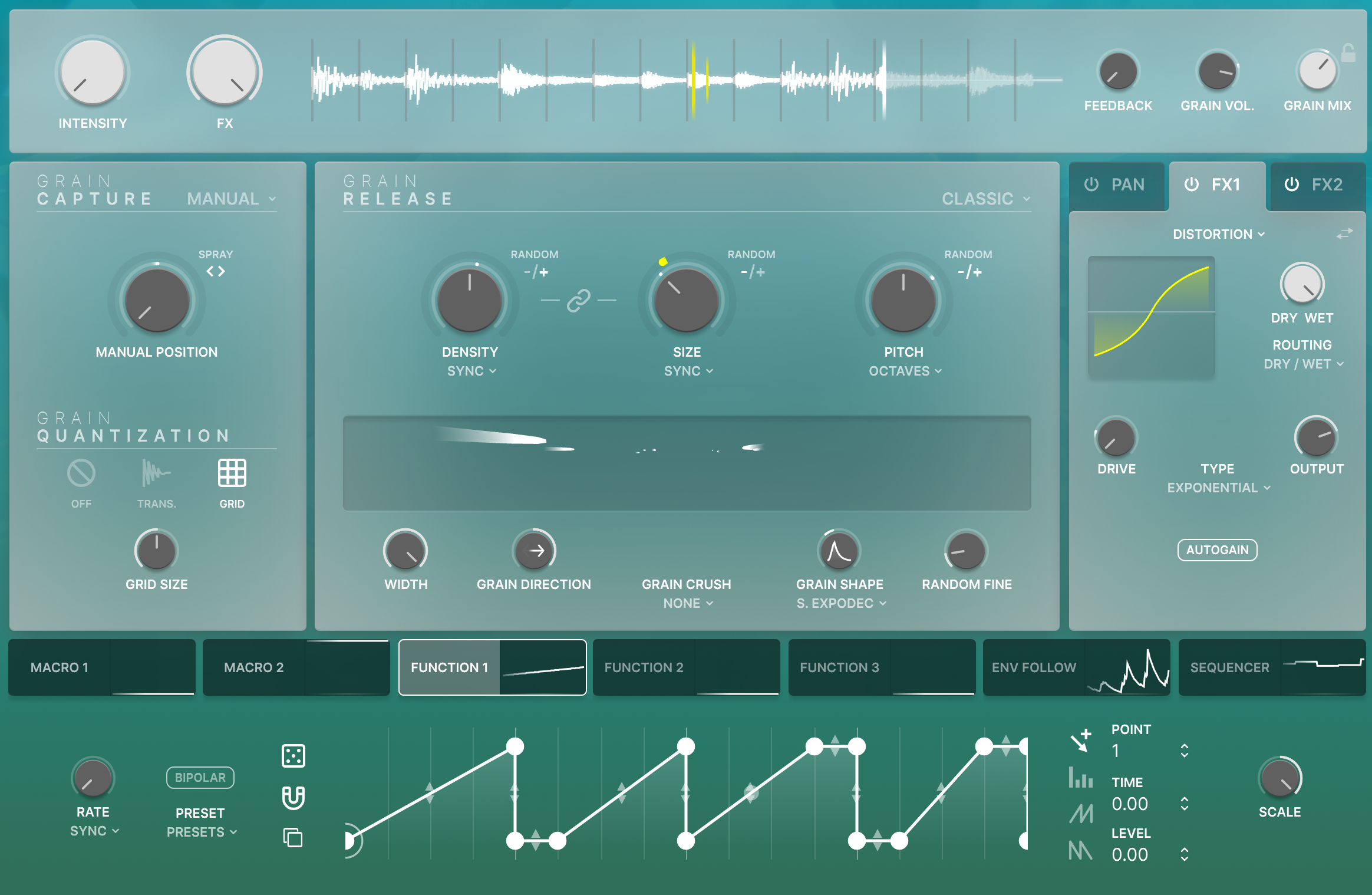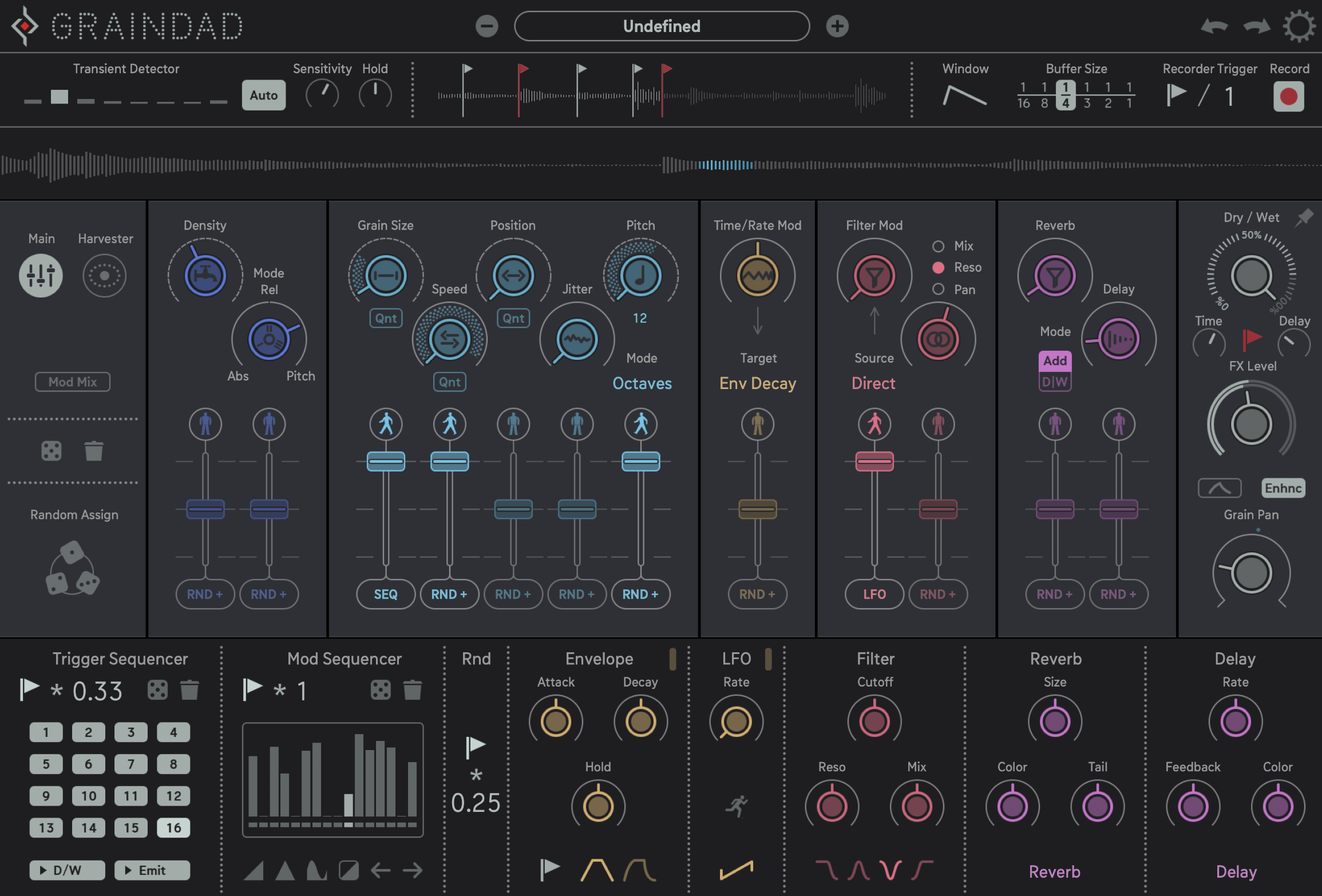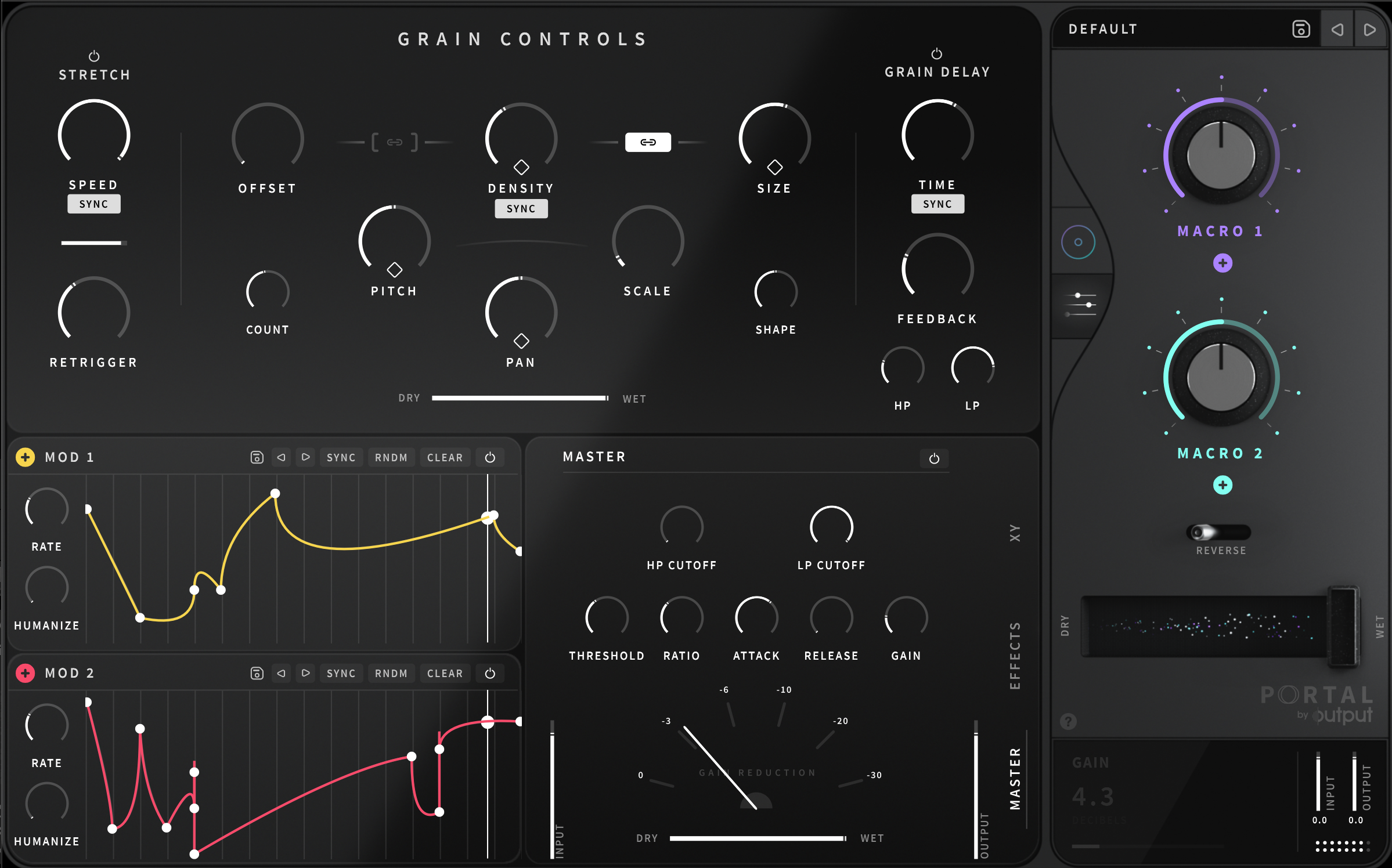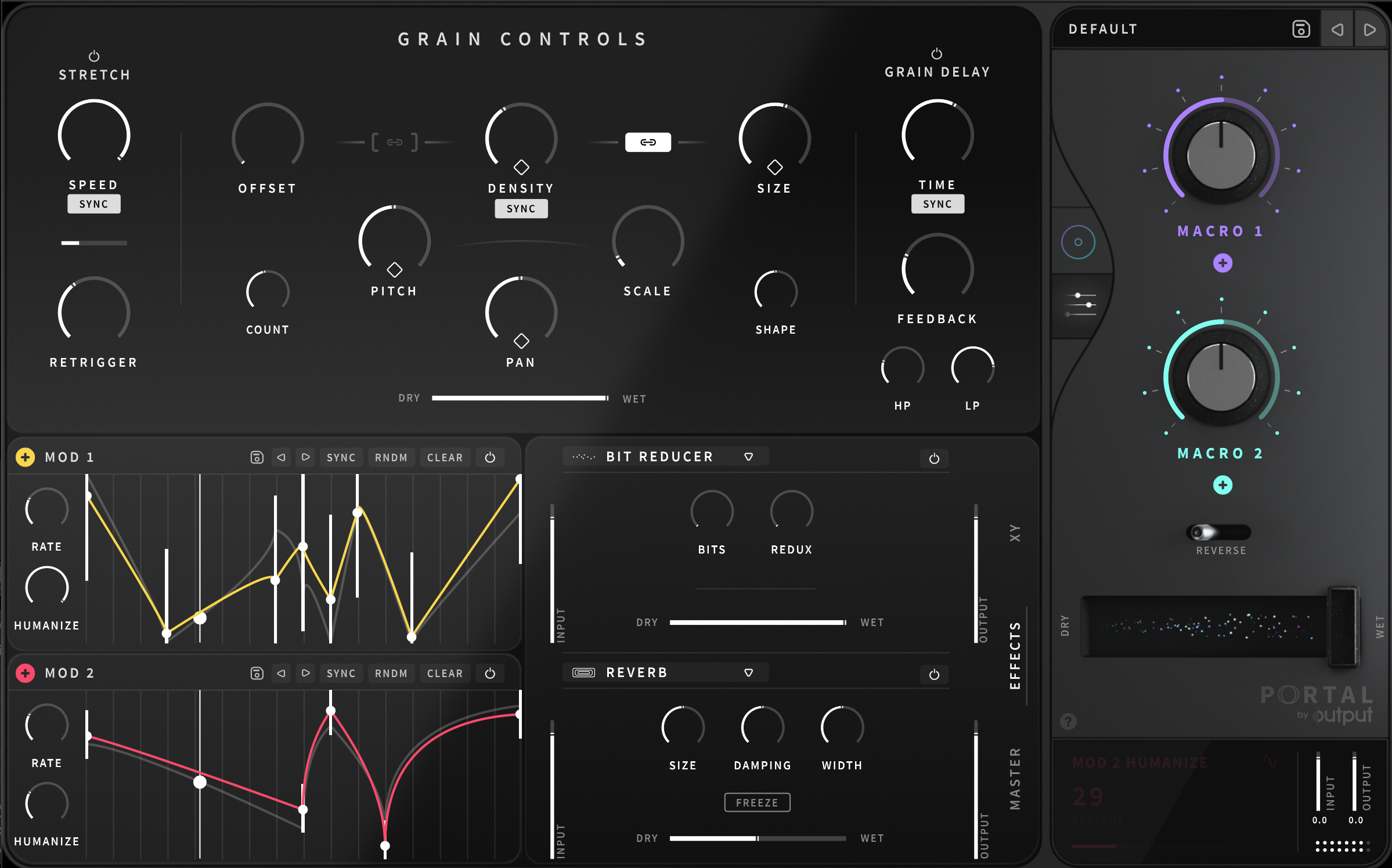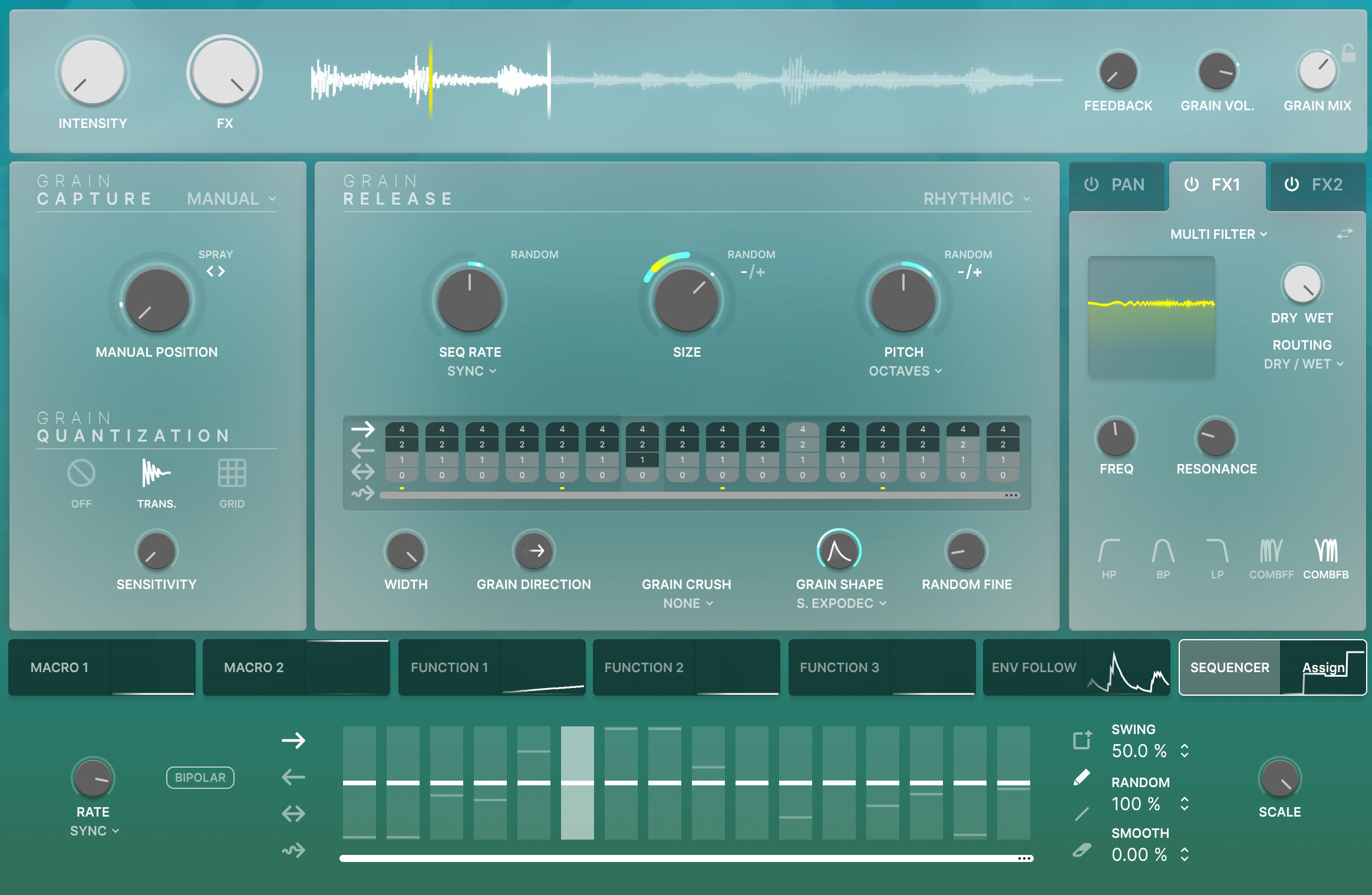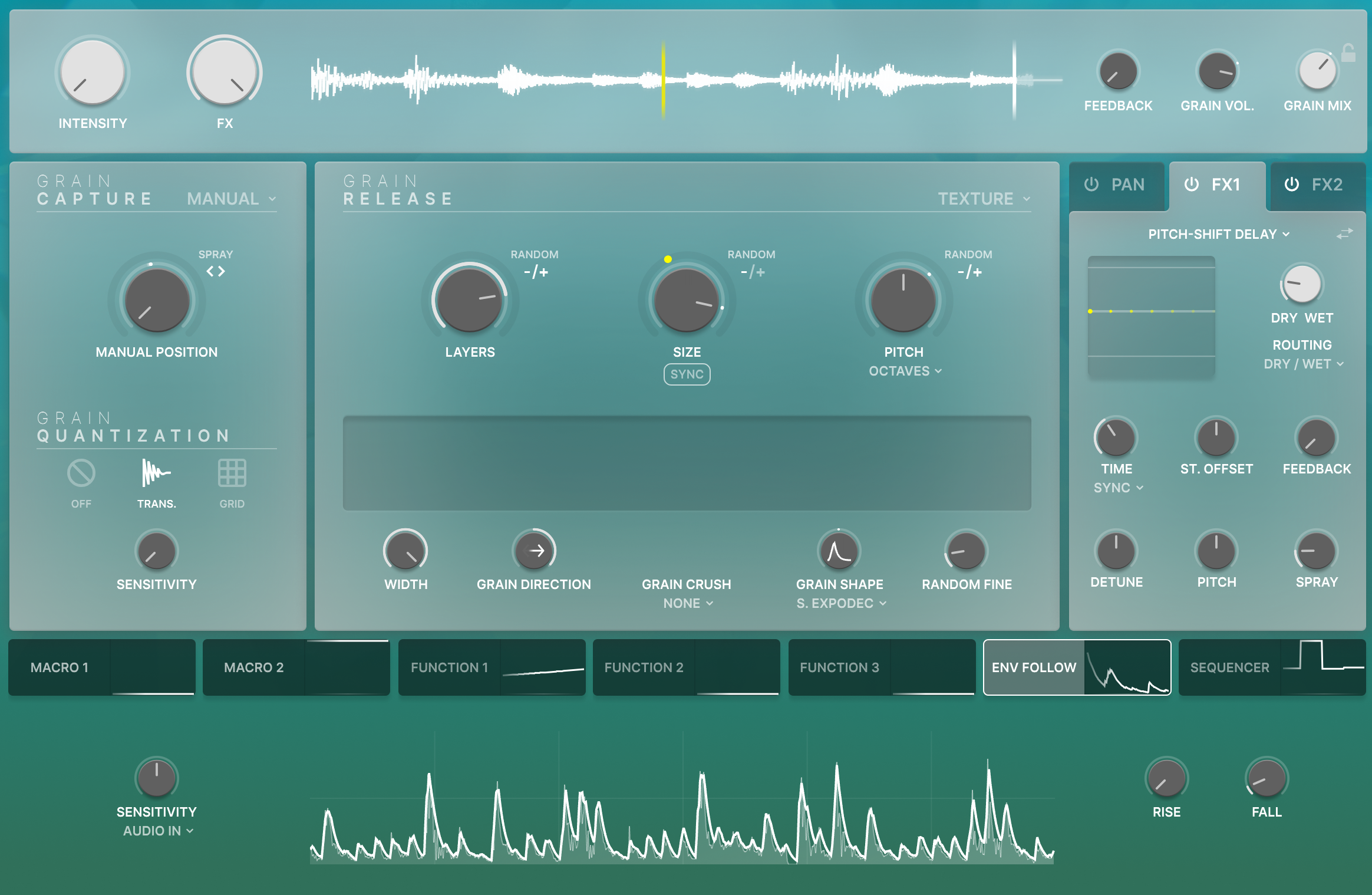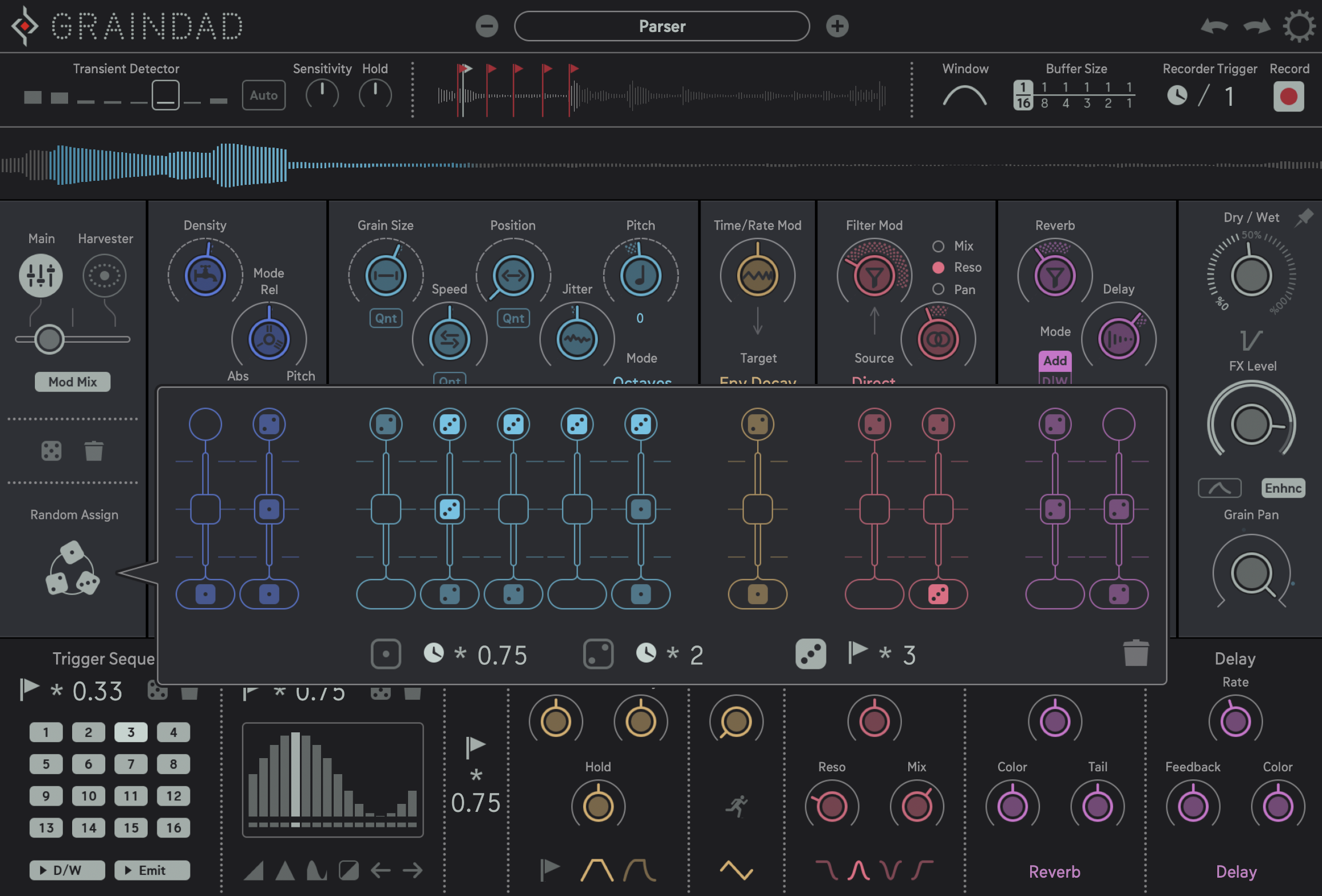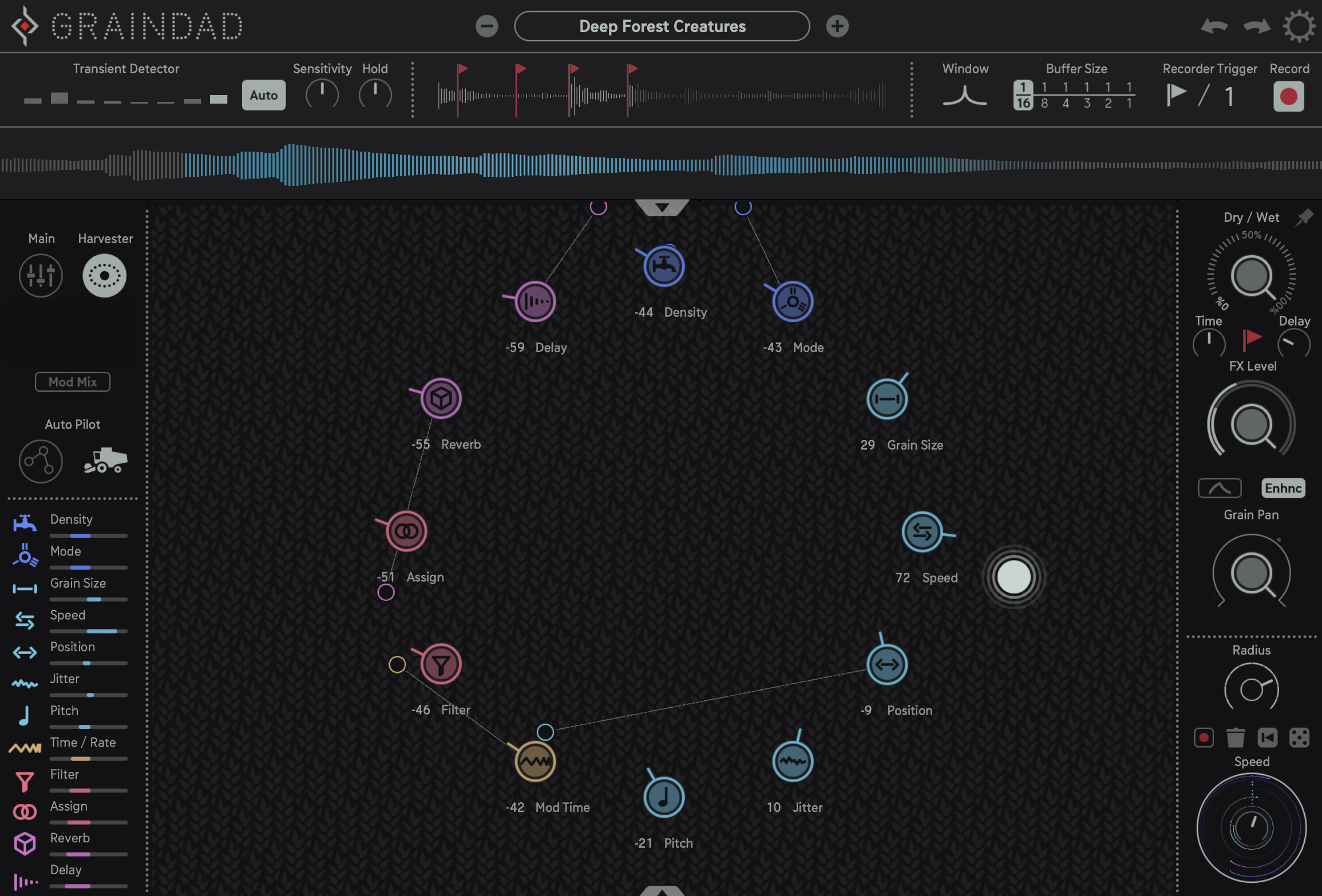PORTAL vs FRAGMENTS vs GRAINDAD
Granular effects are among my favorites, such versatile and fun sound design tools. While many different granular effects exist, I am comparing these 3 because they offer fairly similar granular engines combined with deep modulation and effects. I personally feel these 3 effects have a lot in common, though they do not overlap 1:1 by any means. Also I get asked quite often which of, particularly these 3, is my favorite. And while I will not have an answer to that question by the end of this article, perhaps I can help you decide which one suites your needs best. Portal, _Efx Fragments, and Graindad are all incredibly fun to use and an endless source of inspiration, this comparison isn’t to find the “best” but to distinguish the differences between them.
*it is worth noting before we continue that I have been paid to make presets for Fragments, I have a preset pack for sale for Portal, and have been hooked up with Graindad for free.
I have done my best to observe and compare these granular effects based solely on features and without favoritism
however, I should also mention that my comparisons are based on features I personally find valuable,
perhaps someone else can better judge the quality of stereo spread or cpu usage
ACROSS ALL 3
-cloud style granular engine
-freely routable modulation
-additional filter or effects
-tempo synced grains
-Each one of these grain effects is an experimental sound design power tool, but they all seem to have their own flavor and style, even in the areas where they overlap. While there is a fair amount of crossover between the
three, each one has some unique features and limitations.
One reason I am comparing these three is because they all have a similar quantity of unique attributes.
PORTAL
Granular Engine:
Grain Count: 16
Grain Rate: .5 ms - 1 sec
Window: morphs between 2 shapes
Reverse: reverses all grains or none of them
Modulation: 2 custom lfos w/ humanize
Effects: 2 multi fx slots
7 different effects
master HP/LP filters and compressor
Unique Features: Portal actually has a time stretch engine that you can place prior to the main grain engine, and a grain delay, giving you a few options to mix and match when designing presets. The fast grain playback combined with the grain delay allows for some incredibly interesting evolving resonances. While Portal lacks a random modulator, the 2 custom LFOs have a “humanize” feature, which randomizes each note level and curve shape between nodes, for a semi-randomizer.
Also the XY pad, while being a bit of a gimmick, is a nice touch, being able to adjust both macros at once can be a very fun way to play with presets, and the little visualizer actually changes depending on grain settings. Every preset (including my pack) utilizes both macros making this the best option if you just want something fun to play with w/ digging too deep into the actual engine
and lastly, portal has a post filter and compressor stage, meaning out of the bunch, you get the most effects in series in one plugin
Unique Limitations: Portal does not give you options for the buffer size, and I believe they treat their buffer a little differently, which might explain why it has the lowest simultaneous grain count of the three. Portal also lacks any kind of envelope following, which can be super useful for taming feedback.
Thoughts: Portal has a very polished sound to it, almost glossy. Given it’s ability to go pretty deep into audio range, you can really explore a wide range of textures and tones. The presets are all great and playing with the XY grid is very inspiring.
It is the most simple in terms of modulation out of the bunch, so you’ll likely find it useful as a tonal sculpting/ design tool, or for more simple motions. The whole UI is basically one giant sweet spot, it’s really hard to make portal sound bad.
FRAGMENTS
Granular Engine:
Grain Count: 256
Grain Rate: 4 ms to 4 seconds
Window: 8 modes that morph between 2 shapes
Reverse: per grain, variable randomness from 0-100%
Modulation: 3 custom LFOs
Envelope follower
Step sequencer w/ randomization
*update: the latest version of Fragments allows each modulation slot to be any modulation type
Effects: 2 multi fx slots
9 different effects
Unique Features: Fragments sports 3 separate grain engines; the cloud style engine shared by the other two plugins, a “Texture” engine, which, as described in the manual, stacks multiple grain streams, and a “Rhythmic” engine which is more like a glitchy beat repeater. These 3 modes give fragments the widest range of options within the granular engine as a whole, but unlike the 2 modes in Portal, you can only use one at a time
Also somewhat similar to Portal, fragments has a feedback control, but it differs in a couple ways. Fragments allows you to insert one effects slot into the feedback loop, meaning you have to sacrifice an effect to replicate Portal’s “grain delay”, BUT you can use any of the 9 effects, meaning you can do feedback with a chorus, or reverb or even a comb filter for interesting creative results
Unique Limitations: Filtering in fragments can only be done using an effects slot, meaning that of the three, Fragments allows for the least amount of effects in series, somewhat funny considering it has the largest variety of effects and combinations to choose from.
Also, this might be a bit nit-picky, but the bright green minty UI might be a visual turn-off for some
Thoughts: Fragments seems to have a bit more of a “dry” sound over all, and with so many different modes to experiment with, it can get pretty ugly at times. But that’s the cost of offering more features, it’s a matter of having more opportunities to produce undesired or desired sounds.
But between the various function generators and sequencer I find it really fun for making pitch arpeggiated grain delays and other complex rhythmic motions.
GRAINDAD
Granular Engine:
Grain Count: 64
Grain Rate: into audio rate (could not find a specified limit)
Window: 8 static shapes
Reverse: grains only play forward
Modulation: randomizers, mod sequencer, envelope follower, LFO, and “Harvestor”
Effects: Reverb w/ shimmer, and delay/ modulation effect
Unique Features: Graindad has quite a few unique modulation features, for one, everything that can be tempo synced, can instead be synced by either midi or a multi-band transient detector as well. The transient detecter can watch one of 8 bands, or the whole spectrum, with controls for sensitivity and hold, to really shape its detection. This gives quite a few unique ways to activate grains or randomization, allowing Graindad to react with the audio, rather than just mindlessly running along with the tempo. This might make it a better option for people who create “off grid”.
Graindad excels at chaos, every main panel control can be randomized uniquely, though synced to the same randomizer engine (triggered via either clock or record trigger). But on top of this, there is also a random assign page, giving you 3 more randomizers which can be mapped to each controls modulation source, depth, or activation. It’s quite a plethora of randomness and chaos
On top of all this is the Harvester modulation source, which contains an array of selectable controls, each with their own manually recordable orbit and a “harvester” with a drawable path. The closer the “harvester” orb is to the control, the more it increases its value.
What makes this interesting is that each control orbit and the harvest orb can loop out of sync with each other and the tempo, allowing for some slow interweaving modulation which can be mixed in with the normal modulation. It is sorta gimmicky, but it’s a useful gimmick and gives Graindad the most chaos and evolving motion out of the bunch.
Briefly worth mentioning as well, are the notch filter and shimmer reverb
Unique Limitations: Other than the harvester as an additional modulation source, you can only route one modulation per control.
Graindad also lacks a drawable LFO, and doesn’t have as much “per grain” randomization as the other two (only jitter and pan).
As well, Graindad lacks the ability to play back grains in reverse. A few other areas Graindad is limited in is effects and window shapes, but as you can see above, it makes up for its unique limitations with quite a few unique features
Thoughts: Graindad, like many other Sugarbytes plugins, seems to round off the corners, avoiding sharp tonal edges, it has an almost gloopy thick wxy sound to it at times. It’s hard to describe, but it’s very unique and pleasant.
Between general randomness and the harvester, Graindad can really evolve over time and add some much needed entropy and unpredictability to your sound design.
It is far more new to me than the other two, so I’ll likely update my thoughts with time, but I do feel it has a unique place in my workflow alongside Portal and Fragments
Each one of these Granular effects combines modulation and additional processing in a complex and interesting, but unique way.
Summing up each one briefly, Portal is polished and fun, Fragments is experimental and open, and Graindad is slick and evolving.
I also find it interesting that their strengths and weaknesses all seem to evenly balance out, for example, you might notice Graindad has the longest list of unique features, but it also has the least granular options and effects.
or that Fragments has the most granular options and effects, but does less simultaneously compared to Portal, which does the most simultaneously, but has the least modulation.
Personally I can find a use for each one, and they fit into my workflow in their own unique ways. but if you can only pick one, I hope these reviews have helped you determine the right choice.
if this article helped convince you to purchase any of these plugins, please consider using one of my affiliate links below. (after you have searched to make sure you can’t get a better deal elsewhere)
PORTAL: https://www.pluginboutique.com/product/2-Effects/45-Granular-FX/5458-Portal?a_aid=61c378ab215d5
_EFX FRAGMENTS: https://www.pluginboutique.com/product/2-Effects/45-Granular-FX/8784-Efx-FRAGMENTS?a_aid=61c378ab215d5
GRAINDAD: https://www.pluginboutique.com/product/2-Effects/45-Granular-FX/9699-Graindad?a_aid=61c378ab215d5

